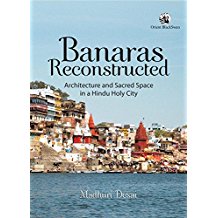Banaras, generally characterized as the longest continuously living city and as a microcosm of Hindu civilization, has long enjoyed epithets of an eternal, timeless, unchanging, and archetypal Hindu holy city. It has, perhaps, for a city of its size, attracted much more attention from scholars of repute, and many of them, in recent times, have forayed beyond the domain of the sacred, to unravelling the complexity that Banaras represents. The sacred and the profane are so intimately connected that seeing one without the other would ascribe or impute homogeneity to the context. Indeed, the idea of Banaras cannot be viewed in the singular. In the book under review, Desai seeks to understand how the network of political authority, regional and imperial politics, cultural and social changes, urbanism, commercial imperatives and local indigenous agencies shaped the ideas and imagination of Banaras. Taking a long historical canvas, she traces how these imaginations took shape in the context of political shifts and the search for legitimacy by shifting power centres and accompanying class structures. Banaras, thus, underwent multiple reconstructions.
December 2017, volume 41, No 12


746327 555132Some genuinely interesting information, effectively written and broadly user pleasant. 508571
202721 526422There is noticeably lots of funds to understand about this. I suppose you created specific nice points in functions also. 718954
961779 887547Significant other, this excellent internet site is fabolous, i merely adore it 88110